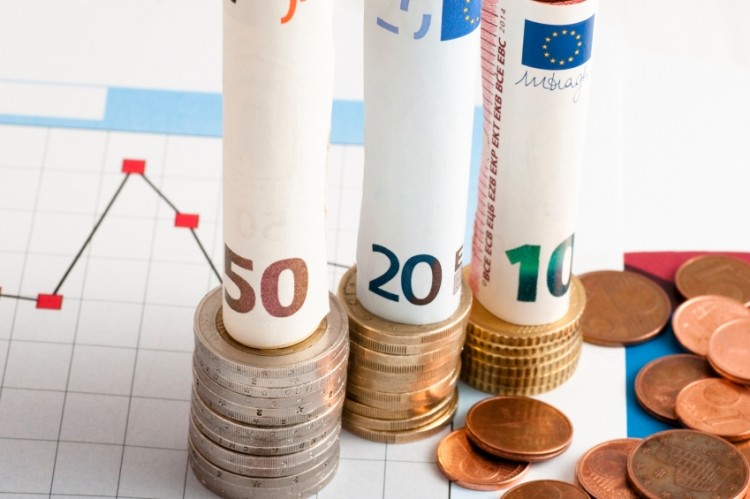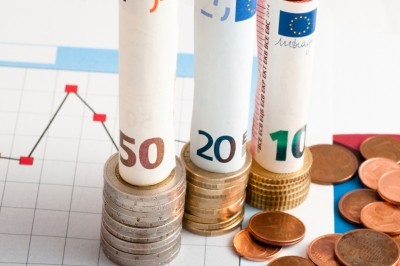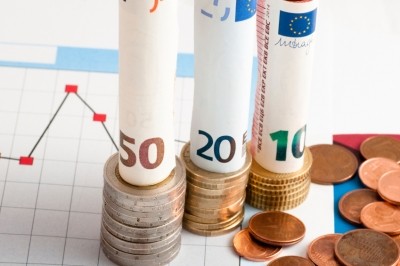No clear indication when EU farm profitability will improve: ForFarmers (UPDATED)

But the Dutch group said there is no clear indication as to when EU farm profitability will improve.
The geopolitical situation also remains tense and volatility on raw material and currency markets is expected to continue, said the feed manufacturer.
The ForFarmers' outlook warned the changing flow of information regarding harvest expectations has a considerable effect on price developments of important raw materials. Uncertainty about the Europe referendum in the UK may affect the exchange rate of sterling, it added.
Arnout Traas, CFO of ForFarmers, told FeedNavigator:
“The lack of consistency in terms of data on commodity grain price developments leaves farmers not knowing whether to buy now or make a longer term contract - that can create insecurity in the market."
He said the debate on the EU referendum in the UK has caused significant sterling volatility.
“Brexit, though, could bring opportunities to UK farmers. It could encourage local growth, by forcing the UK pig sector to become more self-sufficient as there would be fewer finished meat product imports coming into the market,” said the CFO.
But there a lot of negatives also associated with a UK exit from the EU: “Any additional profits generated in the UK for us, though, would still have to be translated back into Euros in our PNL accounts, so a British pound to Euro slump in a Brexit scenario would not be welcome,” said Traas.
Phosphate limits
The ForFarmers report also noted developments in the Netherlands to reduce phosphate emission could affect its total feed business, but in the longer term. The measures mean there are restrictions to the amount of phosphate per hectare that can be produced across all agricultural sectors.
“We are more likely to see its influence in 2018,” said the CFO when commenting on that regulation.
Milk production in the Netherlands, post quota abolition, has been high, with Dutch dairy farmers coming in above those set phosphate limits, somewhere between 4% and 8%, said Traas. As a result, he said, they need strategies to help them reduce phosphate production while maintaining robust milk output. “This is where we can step in, providing information on the right combination of products to achieve those targets,” he added.
The company, though, will be keeping a watchful eye on the potential impact of the trade in phosphate rights between different livestock producers as well.
Financial results, feed volumes
ForFarmers posted its outlook for the year ahead while releasing its financial results for 2015 this week.
It said revenues for last year jumped 1% to €2.2bn. And the operating profit, excluding incidental items, increased by 8.1% to €64.4m, reported the group.
Gross profit amounted to €424.2m, an increase of €30.5m.
The manufacturer’s total feed volume jumped by 3.8% to 9.1m tons in 2015. The like-for-like volume increase was 1.3%.
The feed volumes in the Netherlands saw an increase of 4%. In the Dutch ruminant sector, the increase amounted to 5.4%, mostly as a result of the abolition of the milk quota resulting in more cows being kept on farm, said ForFarmers. "In addition, more compound feed and concentrates per animal were fed in this segment, which resulted in higher milk production," said the manufacturer. It reported volumes were also higher in the poultry sector at 4.9%. In the swine sector, though, there was a general declining trend due to low sales prices of pig meat, said ForFarmers.
There was a slight dip — 0.6% — in feed volumes in its German and Belgian operations due, in part, to longer term contract arrangements in those markets.
The company said volumes in both the swine and the ruminant sector in those countries declined: "Sales in the ruminant sector decreased compared to last year due to the low milk prices resulting in less use of compound feed. The sales in the swine sector declined as a result of the low swine prices and the resulting pressure on our customers’ margins. In the poultry sector volume grew, particularly in products for the laying hen sector, due to the acquisition of new customers. Volume in the broilers segment in Germany [and] Belgium was lower in 2015."
In the UK, ForFarmers reported the like-for-like feed volume declined by 1%. This was put down to a drop in demand from ruminant farmers, in particular in the dry, moist and liquid (DML) segment.
It reported a decrease in the volumes of its compound feed used in the UK ruminant sector by almost 4%. ForFarmers said the reason for this was lower milk prices and the abundant fodder available due to mild temperatures. This decline in volume of compound feed was partly compensated by an increasing demand for single feed from dairy farmers. The volumes in the swine sector remained almost the same. In the poultry sector a like-for-like growth of 2% was realised, added the Dutch producer.
However, the company said that due to acquisitions, total feeds volume in the UK last year did increase by 6.4%.
And ForFarmers noted a significant growth in the number of customers who bought organic feed in 2015.
Public listing
Meanwhile, the company looks set to take the final step in the transition from a cooperative into a listed company.
A resolution regarding a potential listing of ForFarmers on the Amsterdam stock exchange, Euronext, will be on the agenda of its Annual General Meeting (AGM) on 15 April 2016.
Rabobank and ABN AMRO have been advising the company on that transition since ForFarmers’ supervisory board approved the move last year.
This article was amended on 25 March 2016 to include the comments from ForFarmers CFO, Arnout Traas.















